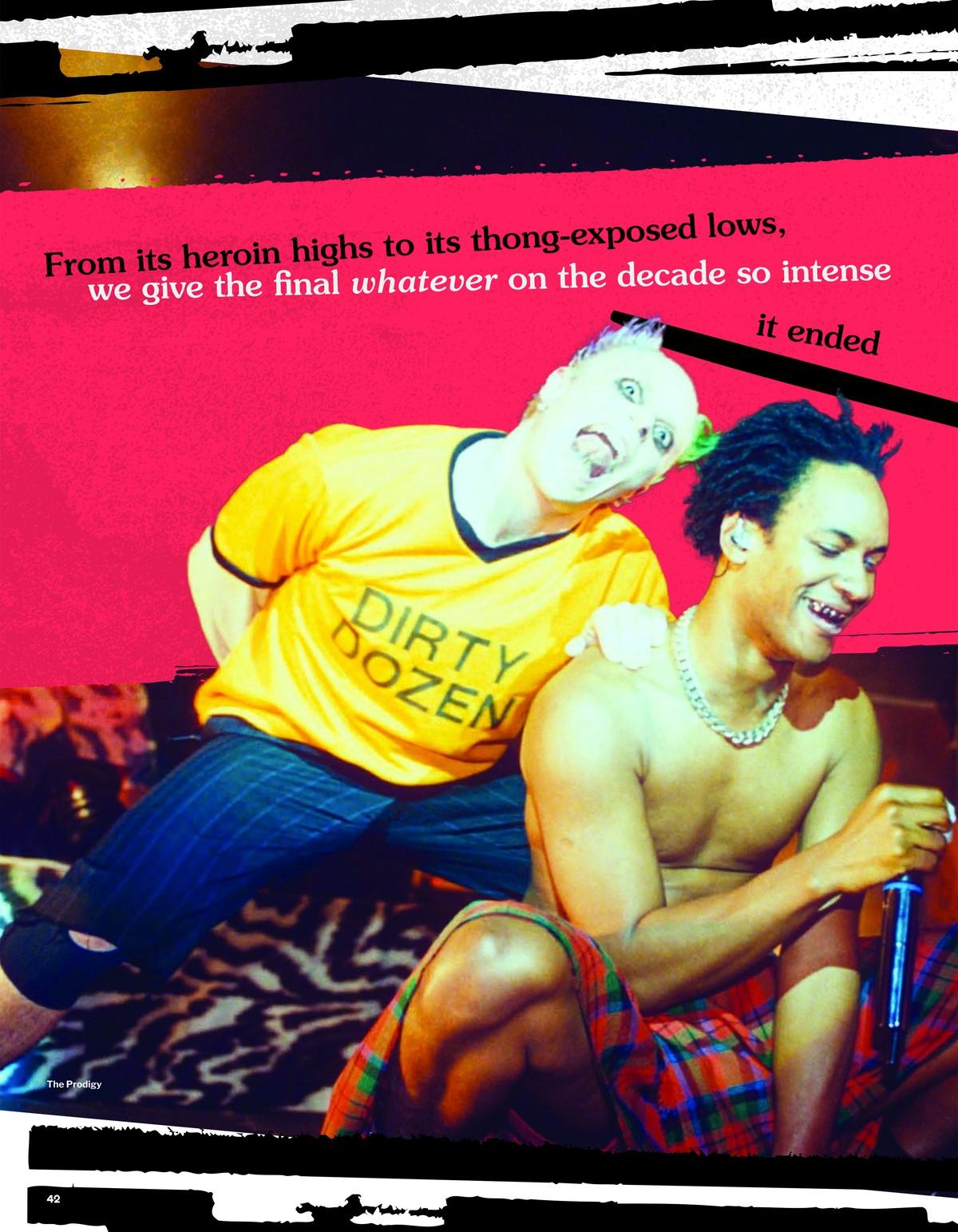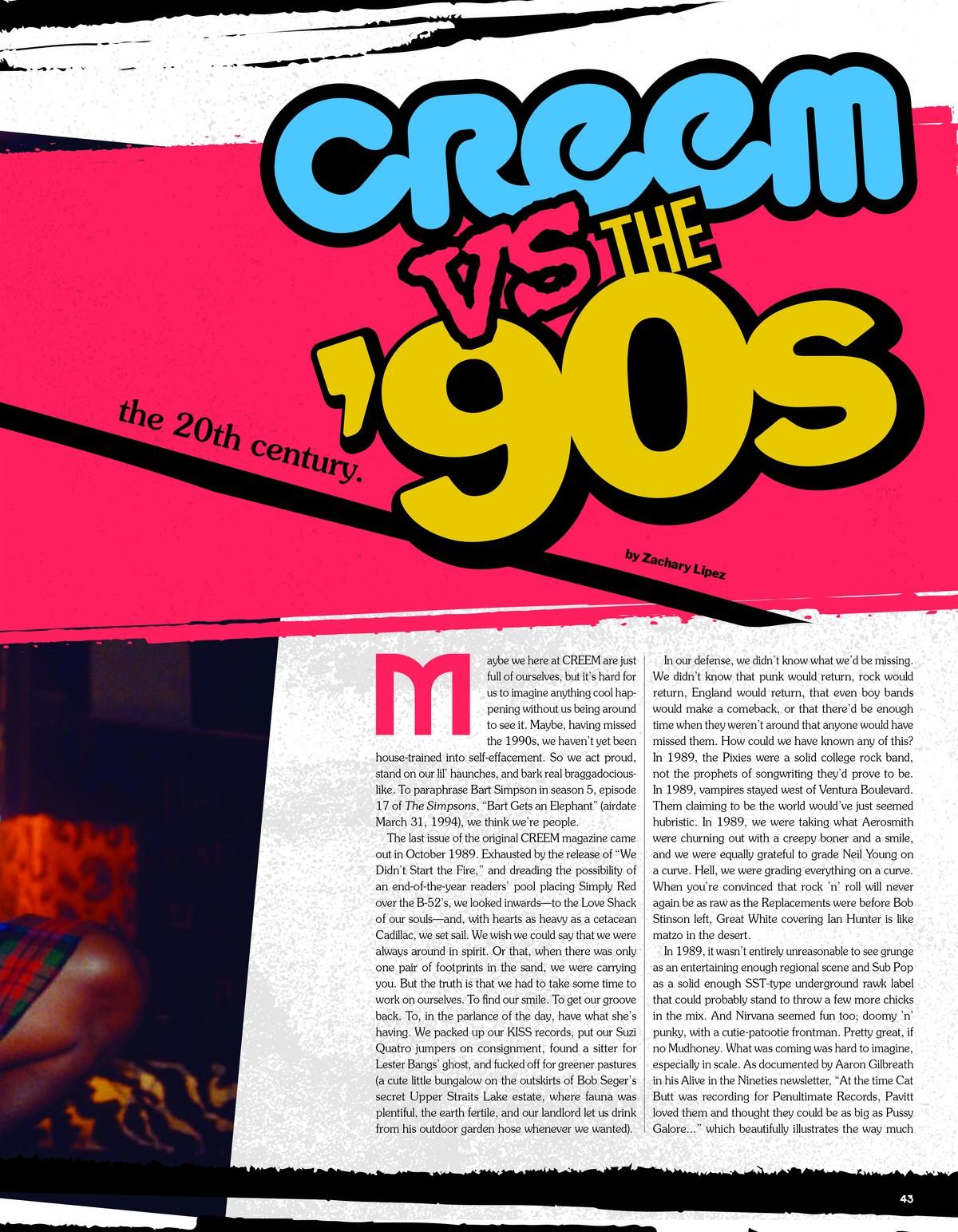CREEM VS THE '90s
From its heroin highs to its thong-exposed lows, we give the final “whatever” on the decade so intense it ended the 20th century.
September 1, 2023


Maybe we here at CREEM are just full of ourselves, but it’s hard for us to imagine anything cool happening without us being around to see it. Maybe, having missed the 1990s, we haven’t yet been house-trained into self-effacement. So we act proud, stand on our lil’ haunches, and bark real braggadociouslike. To paraphrase Bart Simpson in season 5, episode 17 of The Simpsons, “Bart Gets an Elephant” (airdate March 31, 1994), we think we’re people.

